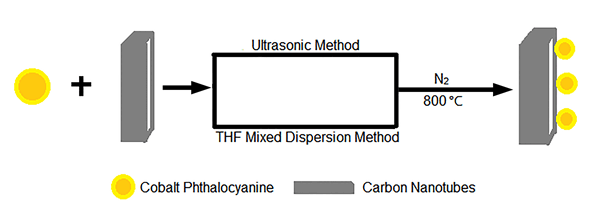| [1] Chang, Z.; Meng, F.; Zhong, H. Chin. J. Chem. 2018, 36, 287.
[2] Wilkinson, D. P.; Zhang, J.; Hui, R.; Fergus, J.; Li, X. Platinum Met. Rev. 2011, 55, 225.
[3] Zhao, T. S.; Li, Y. S.; Shen, S. Y. Front. Energy Power Eng. China. 2010, 4, 443.
[4] Merle, G.; Wessling, M.; Nijmeijer, K. J. Membr. Sci. 2011, 377, 1.
[5] Ciureanu, M.; Roberge, R. J. Phys. Chem. B 2001, 105, 3531.
[6] Steele, B. C.; Heinzel, A. Nature 2001, 414, 345
[7] Zhou, Y.; Neyerlin, K.; Olson, T. S.; Pylypenko, S.; Bult, J.; Dinh, H. N.; Gennett, T.; Hayre, R. O. Energy Environ. Sci. 2010, 10, 1437.
[8] Hayre, R. O. J. Mater. Chem. 2009, 19, 7830.
[9] Wu, J.; Yang, H. Acc. Chem. Res. 2013, 46, 1848.
[10] He, X.; Gang, M.; He, G. Chin. J. Chem. 2017, 35, 673.
[11] Nie, Y.; Li, L.; Wei, Z. Chem. Soc. Rev. 2015, 44, 2168.
[12] Wang, B. J. Power Sources 2005, 152, 1.
[13] Liu, J.; Li, E.; Ruan, M.; Song, P.; Xu, W. Catalysts 2015, 5, 1167.
[14] Titov, A.; Zapol, P.; Kral, P.; Liu, D. J.; Iddir, H.; Baishya, K.; Curtiss, L. A. J. Phys. Chem. C 2009, 113, 21629.
[15] Kruusenberg, I.; Mondal, J.; Matisen, L.; Sammelselg, V.; Tammeveski, K. Electrochem. Commun. 2013, 33, 18.
[16] Media, A.; Jang, J.; Kim, S.; Kim, J.; Peck, D.; Jung, D. Korean Chem. Soc. 2015, 36, 919.
[17] Huang, W.; Ahlfield, J. M.; Zhang, X.; Kohl, P. A. J. Electrochem. Soc. 2017, 164, 217.
[18] Zhang, R.; Peng, Y.; Li, Z.; Li, K.; Ma, J.; Liao, Y.; Zheng, L.; Zuo, X.; Xia, D. Electrochim. Acta 2014, 147, 343.
[19] Ania, C. O.; Seredych, M.; Rodriguez-Castellon, E.; Bandosz, T. J. Appl. Catal. B Environ. 2015, 163, 424.
[20] Huang, W.; Ahlfield, J. M.; Kohl, P. A.; Zhang, X. Electrochim. Acta 2017, 257, 224.
[21] Xu, X.; Peng, S.; Zhang, J.; Lu, S.; Xiang, Y. Acta Chim. Sinica 2016, 74, 271(in Chinese). (徐鑫, 彭思侃, 张劲, 卢善富, 相艳, 化学学报, 2016, 74, 271.)
[22] Ding, L.; Qiao, J.; Dai, X.; Zhang, J.; Zhang, J.; Tian, B. Int. J. Hydrogen Energy 2012, 37, 14103.
[23] Kruusenberg, I.; Matisen, L.; Shah, Q.; Kannan, A. M.; Tam-meveski, K. Int. J. Hydrogen Energy 2012, 37, 4406.
[24] Chen, R.; Li, H.; Chu, D.; Wang, G. J. Phys. Chem. C 2009, 113, 20689.
[25] Ünlü, M.; Zhou, J.; Kohl, P. A. Fuel Cells 2010, 10, 54.
[26] Ünlü, M. J. Phys. Chem. C 2009, 113, 11416.
[27] Yuan, P.; Chen, J.; Pan, D.; Bao, X. Acta Chim. Sinica 2016, 74, 603(in Chinese). (袁珮, 陈建, 潘登, 鲍晓军, 化学学报, 2016, 74, 603.)
[28] Shao, Y.; Zhang, S.; Engelhard, M. H.; Li, G.; Shao, G.; Wang, Y.; Liu, J.; Aksay, I. A.; Lin, Y. J. Mater. Chem. 2010, 20, 7491.
[29] Xing, T.; Zheng, Y.; Li, L. H.; Cowie, B. C. C.; Gunzelmann, D.; Qiao, S. Z.; Huang, S.; Chen, Y. ACS Nano 2014, 8, 6856.
[30] Artyushkova, K.; Serov, A.; Rojas-Carbonell, S.; Atanassov, P. J. Phys. Chem. C 2015, 119, 25917.
[31] Liang, W.; Chen, J.; Liu, Y.; Chen, S. ACS Catal. 2014, 4, 4170.
[32] Zhou, J.; Joseph, K.; Ahlfield, J. M.; Park, D. Y.; Kohl, P. A. J. Electrochem. Soc. 2013, 160, 573. |
